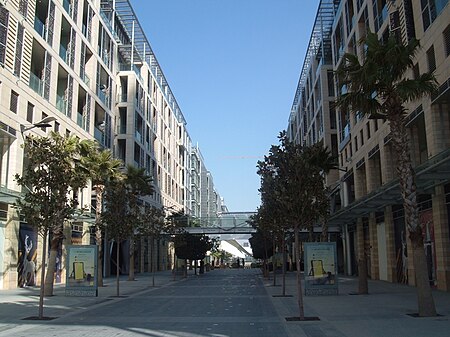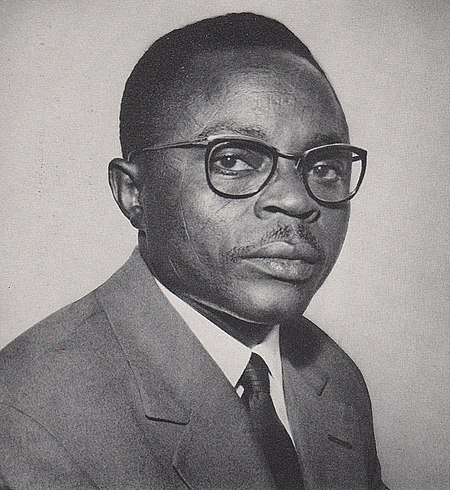Claude Berge
| |||||||||||||||||||||||||||||||
Read other articles:

35th season of top-tier Italian football Football league seasonSerie AThe 1935–36 Serie A winning Bologna squadSeason1935–36ChampionsBologna3rd titleRelegatedPalermoBresciaMatches played240Goals scored610 (2.54 per match)Top goalscorerGiuseppe Meazza(25 goals)← 1934–35 1936–37 → The 1935–36 Serie A season was won by Bologna. Serie A 1935-36 teams distribution Teams Genova 1893 and Bari had been promoted from Serie B. Final classification Pos Team Pld W D L GF GA GD Pts Qualifi…

Terms for races in the Bible The first depiction of historical ethnology of the world separated into the biblical sons of Noah: Semites, Hamites and Japhetites, 1771, Gatterer's Einleitung in die Synchronistische Universalhistorie. Gatterer explains that modern history has shown the truth of the biblical prediction of Japhetite supremacy (Genesis 9:25–27).[1] Click the image for a transcription of the text. Race History Historical concepts Biblical terminology for race Society Color te…

Indonesian rice dish Nasi ulamNasi ulam Betawi (Jakarta) style, topped with dendeng sapi (beef jerky), krupuk, and omelette.CourseMain coursePlace of originIndonesia[1]Region or stateJakarta[2]Associated cuisineIndonesia, Malaysia, Singapore and Southern Thailand[3]Main ingredientsSteamed rice dish mixed with various herbsVariationsRich variations across the respective region Media: Nasi ulam Nasi ulam is a traditional Indonesian dish of steamed rice (nasi) serv…

Pour les articles homonymes, voir Lacaze. Lucien LacazeLucien Lacaze en 1915.FonctionsPrésidentConservatoire national des arts et métiers1945-1955Fauteuil 40 de l'Académie française12 novembre 1936 - 23 mars 1955Jules CambonJacques ChastenetPrésidentAcadémie de marine1928-1929Vice-présidentConseil de la Marine1919-1922Préfet maritime de Toulonaoût 1917 - 1919Ministre de la Marine20 mars - 2 août 1917Ministre de la Guerre15 - 17 mars 1917Ministre de la Marine12 décembre 1916 - 17 mars …

Louison Bobet Bobet al Tour de France 1951 Nazionalità Francia Ciclismo Specialità Strada Termine carriera 1962 CarrieraSquadre di club 1947-1954 Stella1949 Bianchi1950 Guerra1951-1953 Bottecchia1952 Tebag1955-1960L. Bobet-BP1961 Ignis1962Margnat-PalomaNazionale 1950-1961 FranciaPalmarès Mondiali su strada Oro Solingen 1954 In linea Argento Waregem 1957 In linea Argento Reims 1958 In linea Modifica dati su Wikidata · Manuale Louison Bobet…

Korean rock (Korean: 한국의 록) is rock music from South Korea.[1] It has roots in American rock, which was imported to South Korea by U.S. soldiers fighting in the Korean War[2][3] and stationing in U.S. military bases in South Korea after the war. Around the U.S. military bases, local musicians could have opportunities to learn American rock music and perform it on stage for U.S. soldiers. As a result, many Korean rock bands, called Vocal Bands or Group Sou…

Stadion OlimpiadeNama lengkapStadion PembukaLokasiGrenoble, PrancisKoordinat45°09′57″N 5°43′56″E / 45.16583°N 5.73222°E / 45.16583; 5.73222Koordinat: 45°09′57″N 5°43′56″E / 45.16583°N 5.73222°E / 45.16583; 5.73222Kapasitas60,000KonstruksiDibuka1968Dihancurkan1968 Stadion Olimpiade, juga dikenal sebagai Stadion Pembuka, adalah stadion sementara di Grenoble, Prancis. Dibangun untuk hanya menjadi tuan rumah upacara pembukaan un…

Form of improvised dancing Contact ImprovisationAlso known asCI, Contact, Contact ImprovCountry of originUnited StatesCreatorSteve PaxtonFamous practitionersSteve Paxton, Nancy Stark Smith, Lisa NelsonParenthoodmodern dance, postmodern dance,[1] martial arts (Aikido), somatic practices (Release Technique)Descendant artsUnderscore (Nancy Stark Smith), Material for the Spine (Steve Paxton) Contact improvisation is a form of improvised partner dancing that has been developing internationall…

2016年美國總統選舉 ← 2012 2016年11月8日 2020 → 538個選舉人團席位獲勝需270票民意調查投票率55.7%[1][2] ▲ 0.8 % 获提名人 唐納·川普 希拉莉·克林頓 政党 共和黨 民主党 家鄉州 紐約州 紐約州 竞选搭档 迈克·彭斯 蒂姆·凱恩 选举人票 304[3][4][註 1] 227[5] 胜出州/省 30 + 緬-2 20 + DC 民選得票 62,984,828[6] 65,853,514[6] 得…

Lokasi Distrik Rishiri Subprefektur Sōya. Rishiri (利尻郡code: ja is deprecated , Rishiri-gun) adalah distrik yang terletak di Subprefektur Sōya, Hokkaido, Jepang. Distrik ini terdiri dari Pulau Rishiri, di Laut Jepang di sebelah barat ujung utara Hokkaido. Per 31 Januari 2024, distrik ini memiliki estimasi jumlah penduduk sebesar 4.052 jiwa dan memiliki kepadatan penduduk sebesar 22,25 orang per km2. Distrik ini memiliki luas wilayah sebesar 182,12 km2. Bandara Rishiri terletak di Ris…

本條目存在以下問題,請協助改善本條目或在討論頁針對議題發表看法。 此條目需要編修,以確保文法、用詞、语气、格式、標點等使用恰当。 (2013年8月6日)請按照校對指引,幫助编辑這個條目。(幫助、討論) 此條目剧情、虛構用語或人物介紹过长过细,需清理无关故事主轴的细节、用語和角色介紹。 (2020年10月6日)劇情、用語和人物介紹都只是用於了解故事主軸,輔助讀�…

Halaman ini berisi artikel tentang teologi Katolik secara umum perihal tubuh manusia. Untuk pengajaran teologis dari Paus Yohanes Paulus Agung mengenai tubuh manusia, lihat Teologi Tubuh. Bagian dari seri tentangGereja KatolikBasilika Santo Petrus, Kota Vatikan Ikhtisar Paus (Fransiskus) Hierarki Sejarah (Lini Masa) Teologi Liturgi Sakramen Maria Latar Belakang Yesus Penyaliban Kebangkitan Kenaikan Gereja Perdana Petrus Paulus Bapa-Bapa Gereja Sejarah Gereja Katolik Sejarah Lembaga Kepausan Kons…

2nd episode of the 2nd season of Millennium Beware of the DogMillennium episodeEpisode no.Season 2Episode 2Directed byAllen CoulterWritten byGlen MorganJames WongProduction code5C02Original air dateSeptember 26, 1997 (1997-09-26)Running time42 minutesGuest appearances Randy Stone as Michael Beebe R. G. Armstrong as The Old Man Brent Butt as Short Order Cook Ralph J. Alderman as Nate Anita Wittenberg as Cora Arnie Walters as Paul Lombardo Margaret Martin as Mary Anne Lombardo …

The Boulevard in 2016 The Boulevard is a $300 million mixed-use development that is located in Abdali Project in Amman, Jordan. It consists of a pedestrian strip surrounded by twelve 6 floored buildings. Inaugurated in 2014 by King Abdullah II accompanied by Queen Rania.[1][2] Description The development consists of a pedestrian strip surrounded by twelve 6 floored buildings; of which 4 are offices and 8 are residential. 398 studios and apartments from residential buildings …

Irish unionist politician The Right HonourableEdward James SaundersonPC DL JPPhotograph of Colonel Saunderson, c. 18911st Leader of the Ulster Unionist PartyIn office1905–1906Preceded byOffice establishedSucceeded byWalter Long1st Leader of the Irish Unionist AllianceIn office1891–1906Preceded byOffice establishedSucceeded byWalter LongMember of Parliament for North ArmaghIn office18 December 1885 – 21 October 1906Preceded byConstituency establishedSucceeded byWilliam MooreM…

「スペイン」のその他の用法については「スペイン (曖昧さ回避)」をご覧ください。 「エスパーニャ」はこの項目へ転送されています。その他の用法については「エスパーニャ (曖昧さ回避)」をご覧ください。 スペイン王国 Reino de España (国旗) (国章) 国の標語:Plus Ultra(ラテン語:更なる前進) 国歌:Marcha Real(スペイン語)国王行進曲 公用語 スペイン語[注釈 …

This article may require cleanup to meet Wikipedia's quality standards. The specific problem is: remove irrelevant information. Please help improve this article if you can. (August 2022) (Learn how and when to remove this message) Britannia with Belgian Refugees (1916) by Belgian painter André Cluysenaar During the First World War between 1914 and 1918, many Belgian refugees fled to the United Kingdom. Because archive material of the hundreds of local Belgian refugee committees is scant and inc…

(Tulisan miring menandakan keberlanjutan pemerintahan secara de facto) No Nama (Kelahiran–Kematian) Gambar Mulai menjabat Berhenti menjabat Pemilu Afiliasi politik Perdana Menteri Republik Volta Hulu 1 Daniel Ouezzin Coulibaly(1909–1958) 5 Agustus 1956 3 September 1957( digulingkan.) UDV–RDA 2 Maurice Yameogo(1921–1993) 3 September 1957 5 Agustus 1960 1957 1959 UDV–RDA Republik Volta Hulu 2 Maurice Yameogo(1921–1993) 5 Agustus 1960 3 Januari 1966(digulingkan.) 19591965 UDV–RDA 3 Sa…

This article needs additional citations for verification. Please help improve this article by adding citations to reliable sources. Unsourced material may be challenged and removed.Find sources: Treasury Casino – news · newspapers · books · scholar · JSTOR (January 2009) (Learn how and when to remove this message) Treasury Casino Location Brisbane, Queensland Address Cnr George & Elizabeth Streets, BrisbaneOpening dateApril 1995Closing date2024 (plann…